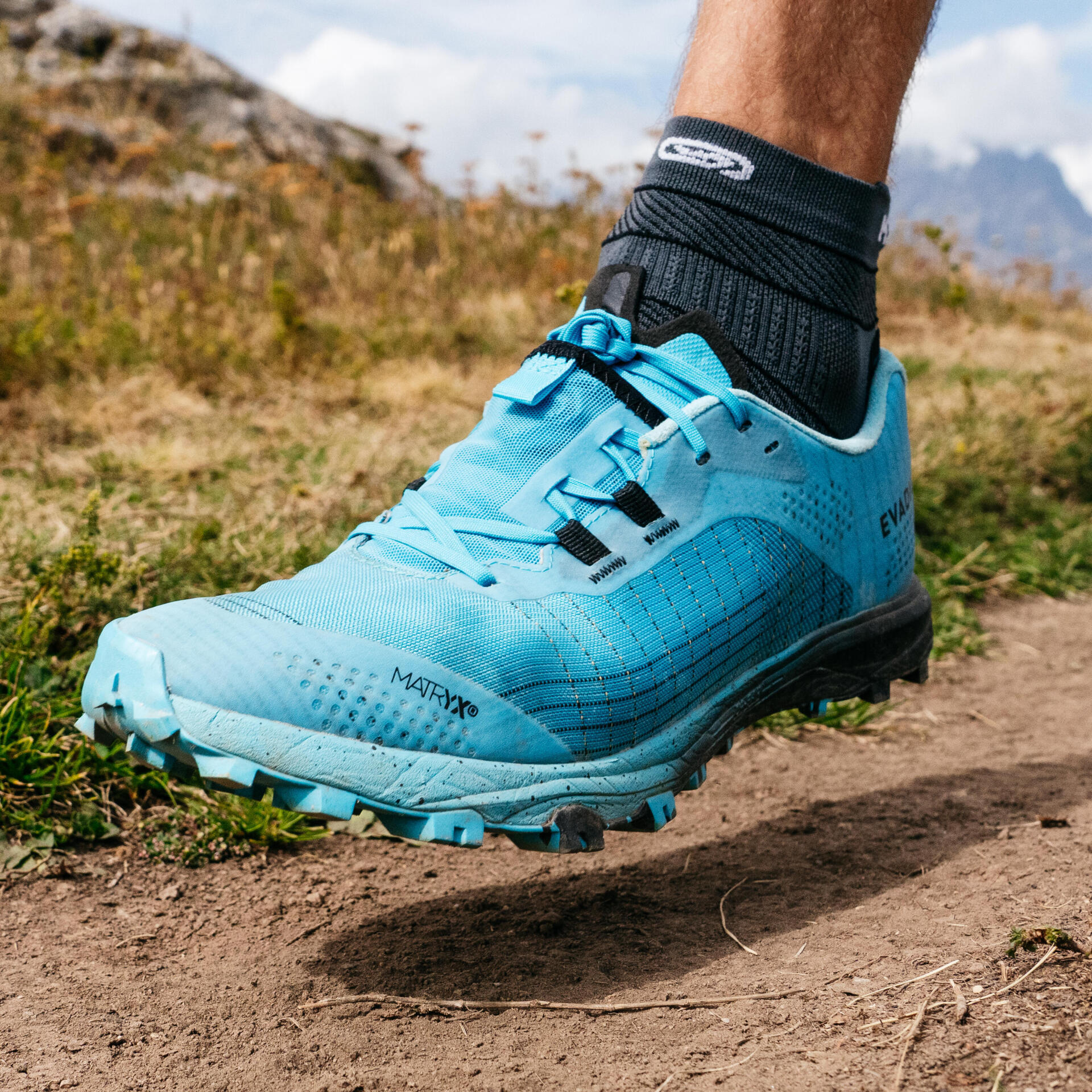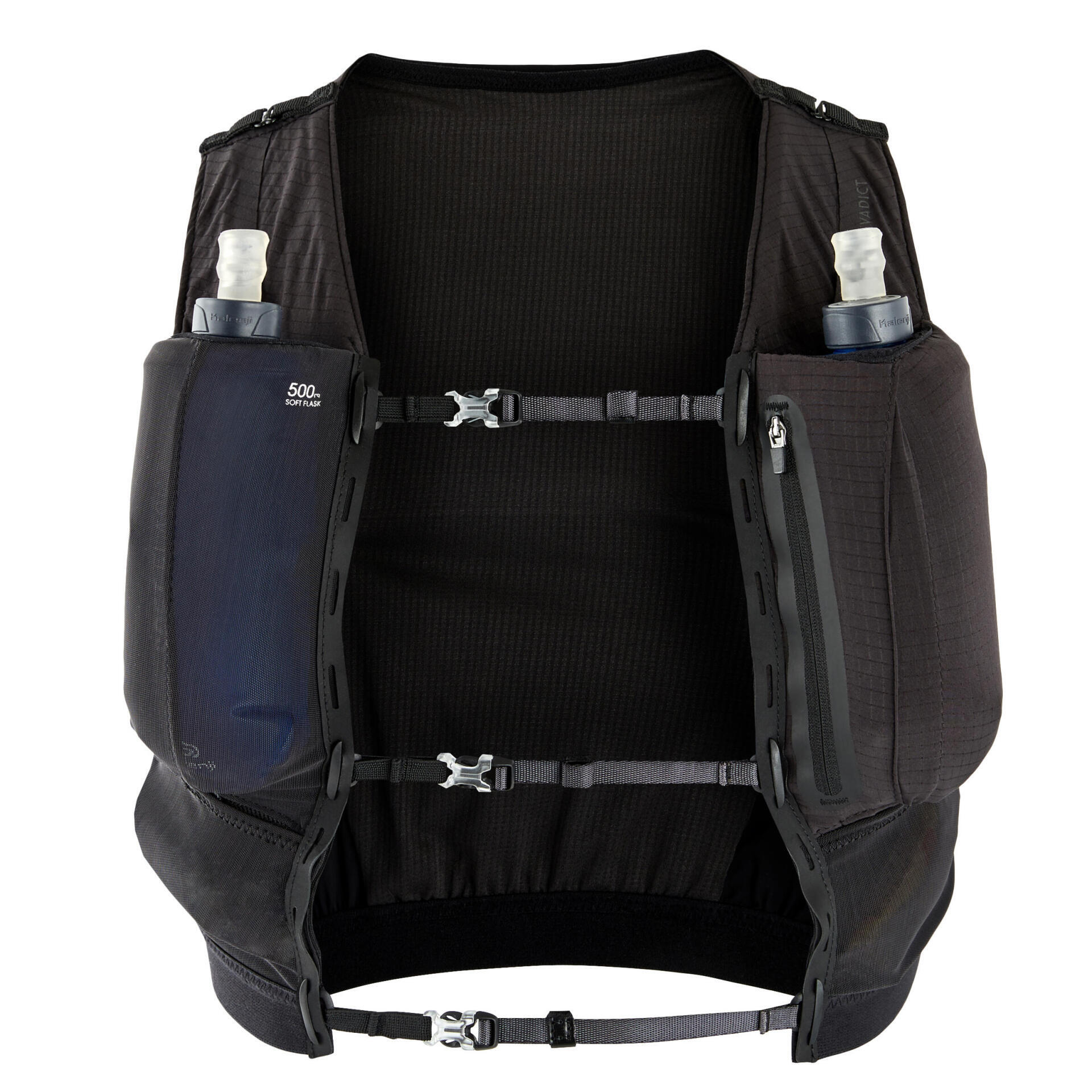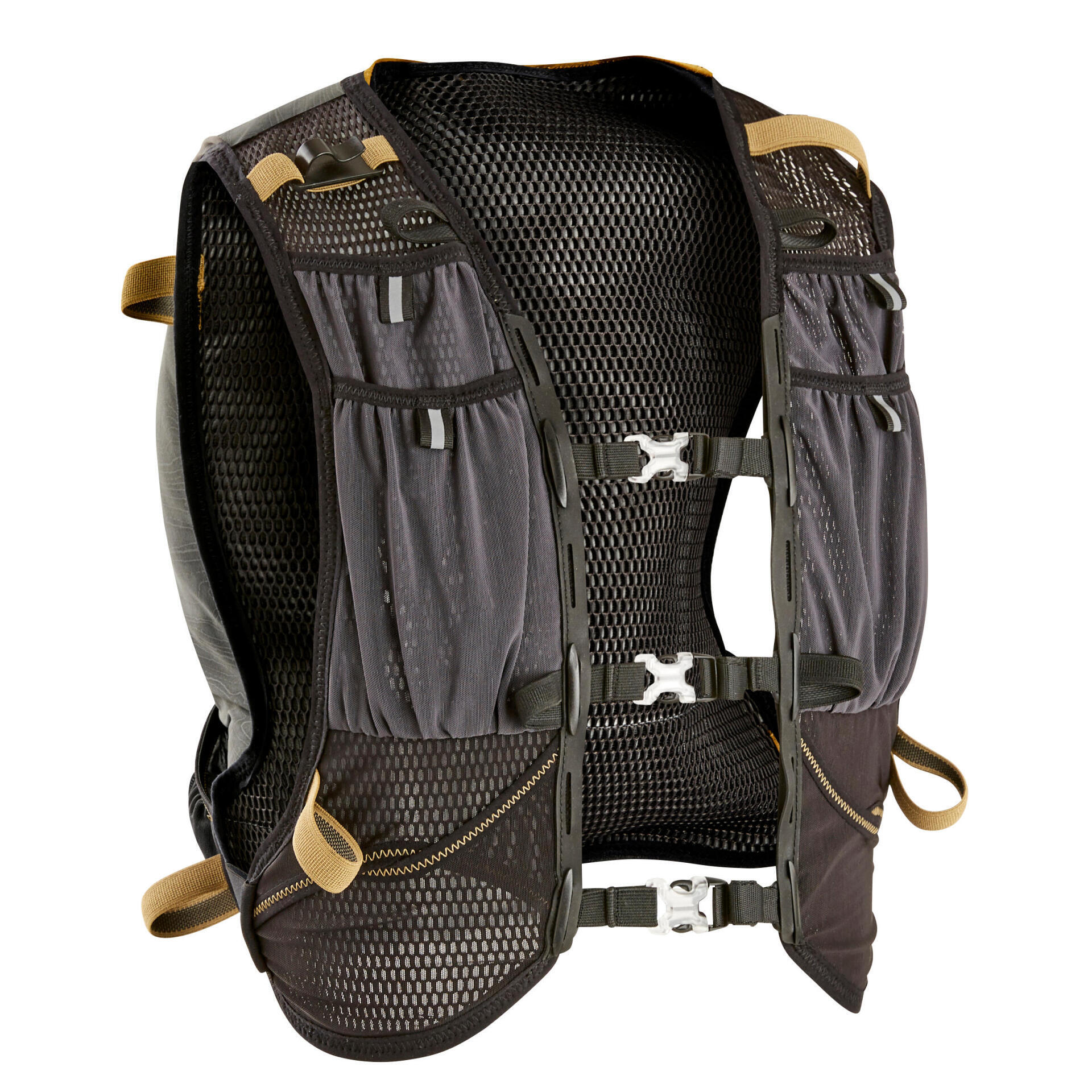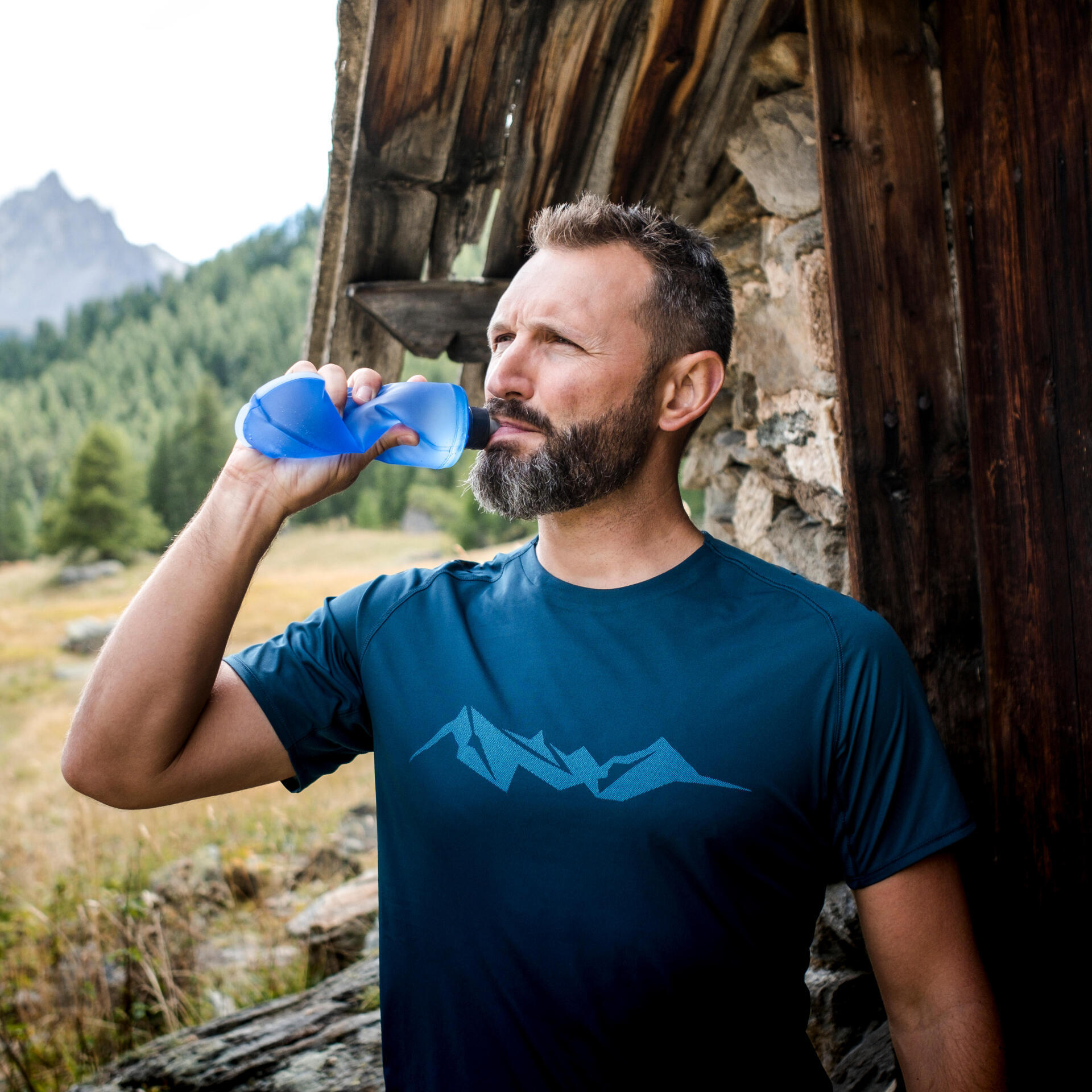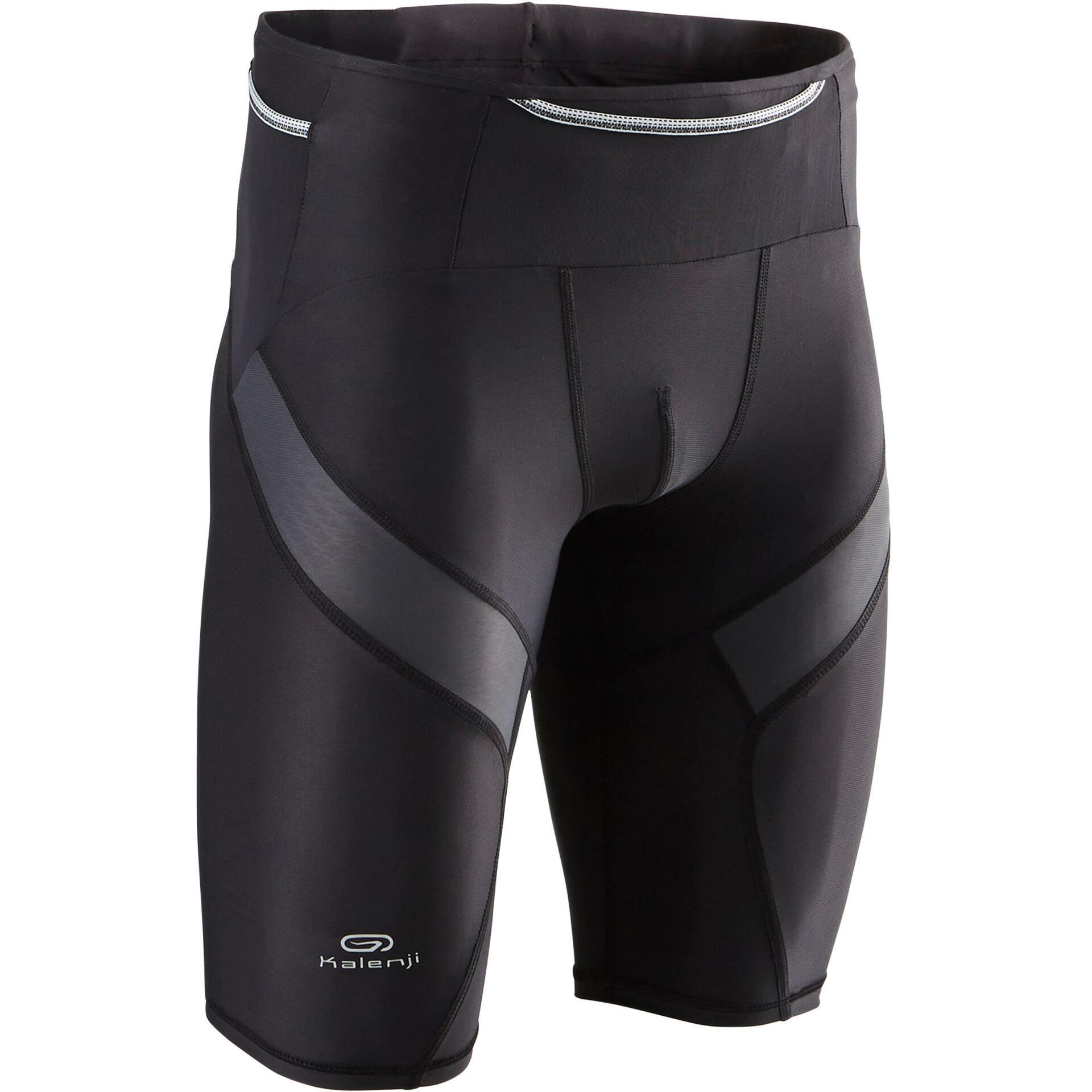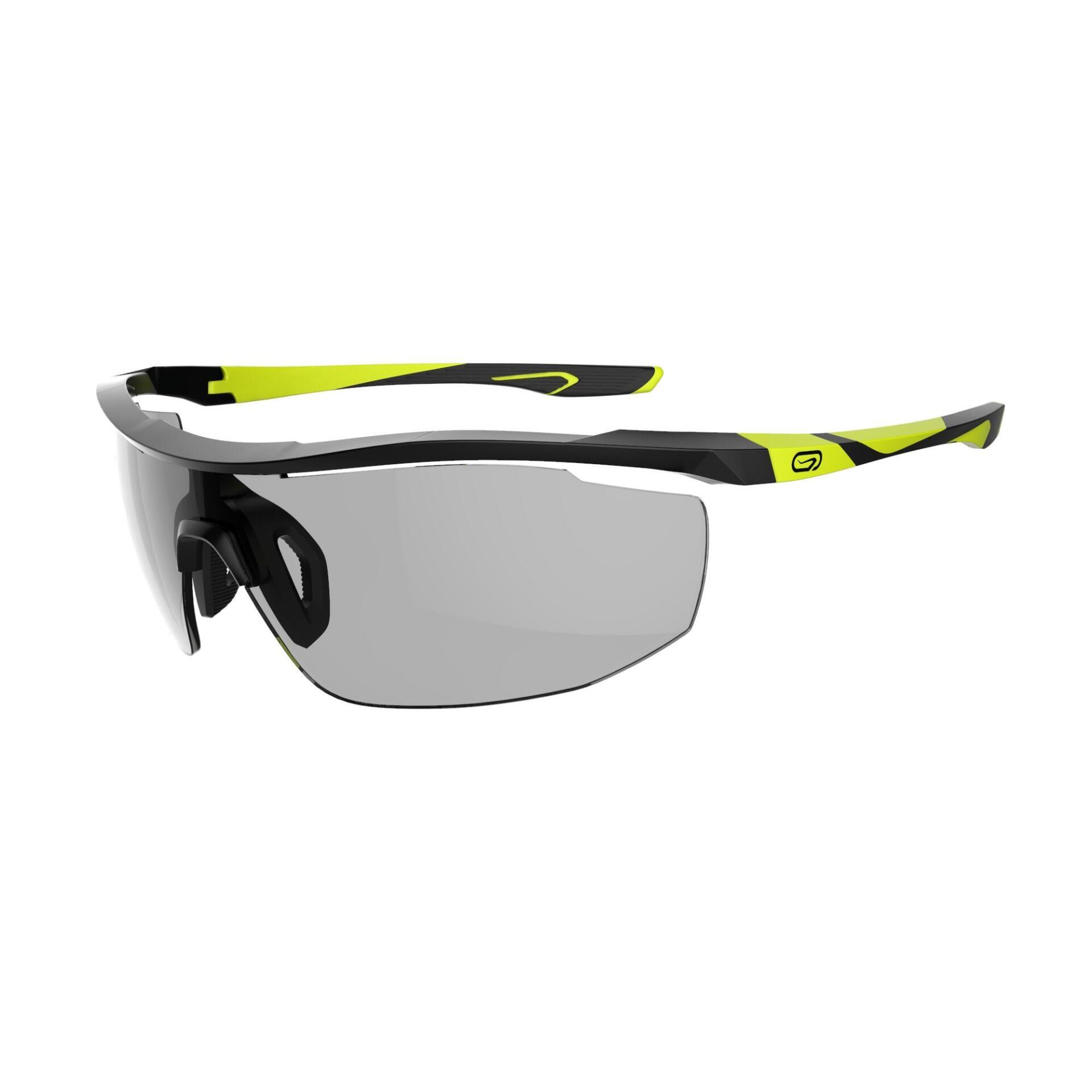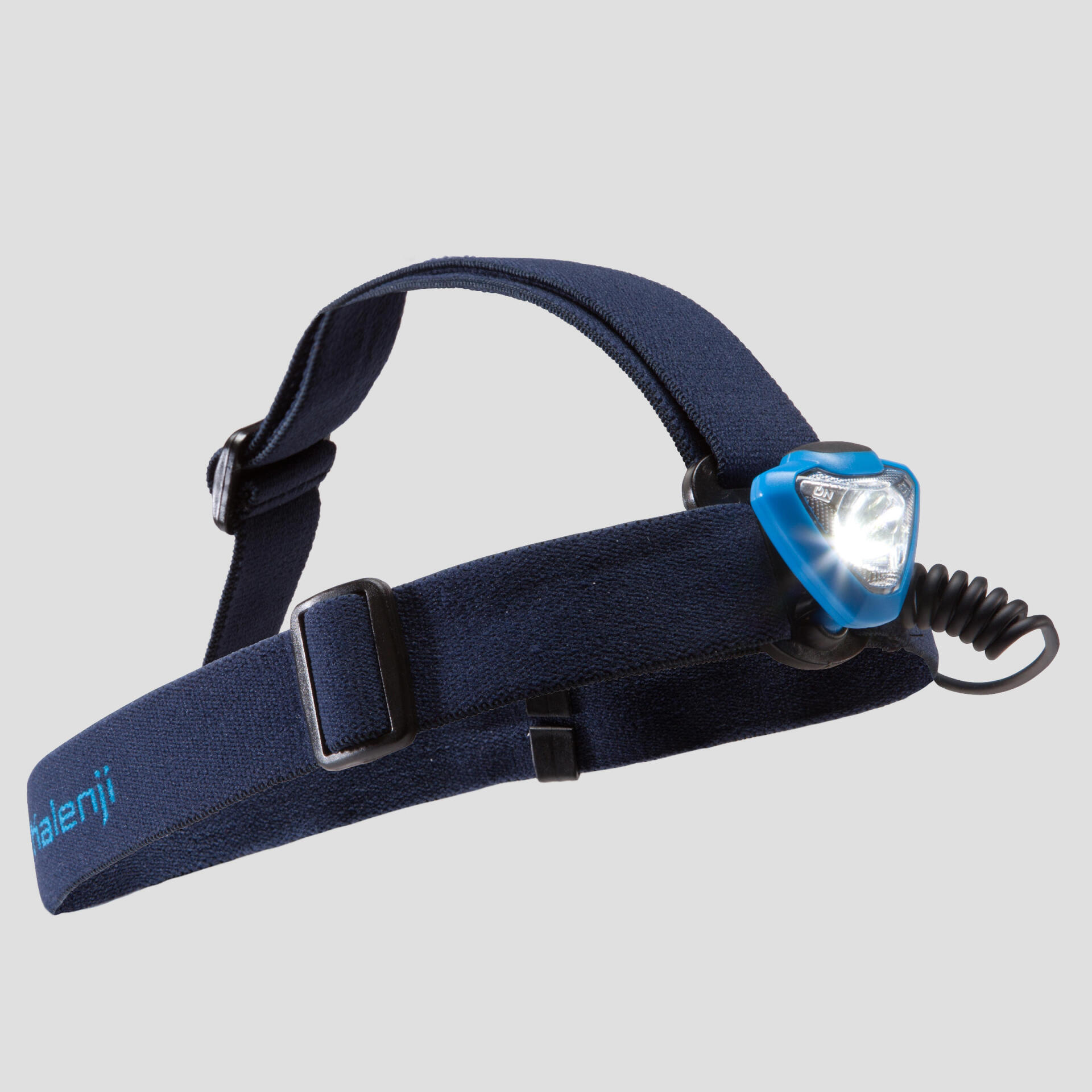1. Trail running shoes
Shoes are the most important gear when it comes to trail running – they must be able to support your entire bodyweight, so they should be stable, comfortable and have a good grip.
The material should be breathable and provide sufficient protection, and the heels should provide enough support for your ankles on uneven trails in order to prevent injuries and muscle strain.
In addition, the soles should have a good tread to provide plenty of grip on wet surfaces. Some shoes also have a clip for storing the laces inside the tongue, which reduces the risk of them becoming loose in thick vegetation.
In addition to meeting the above requirements, the ideal pair of trail running shoes should also be lightweight.


